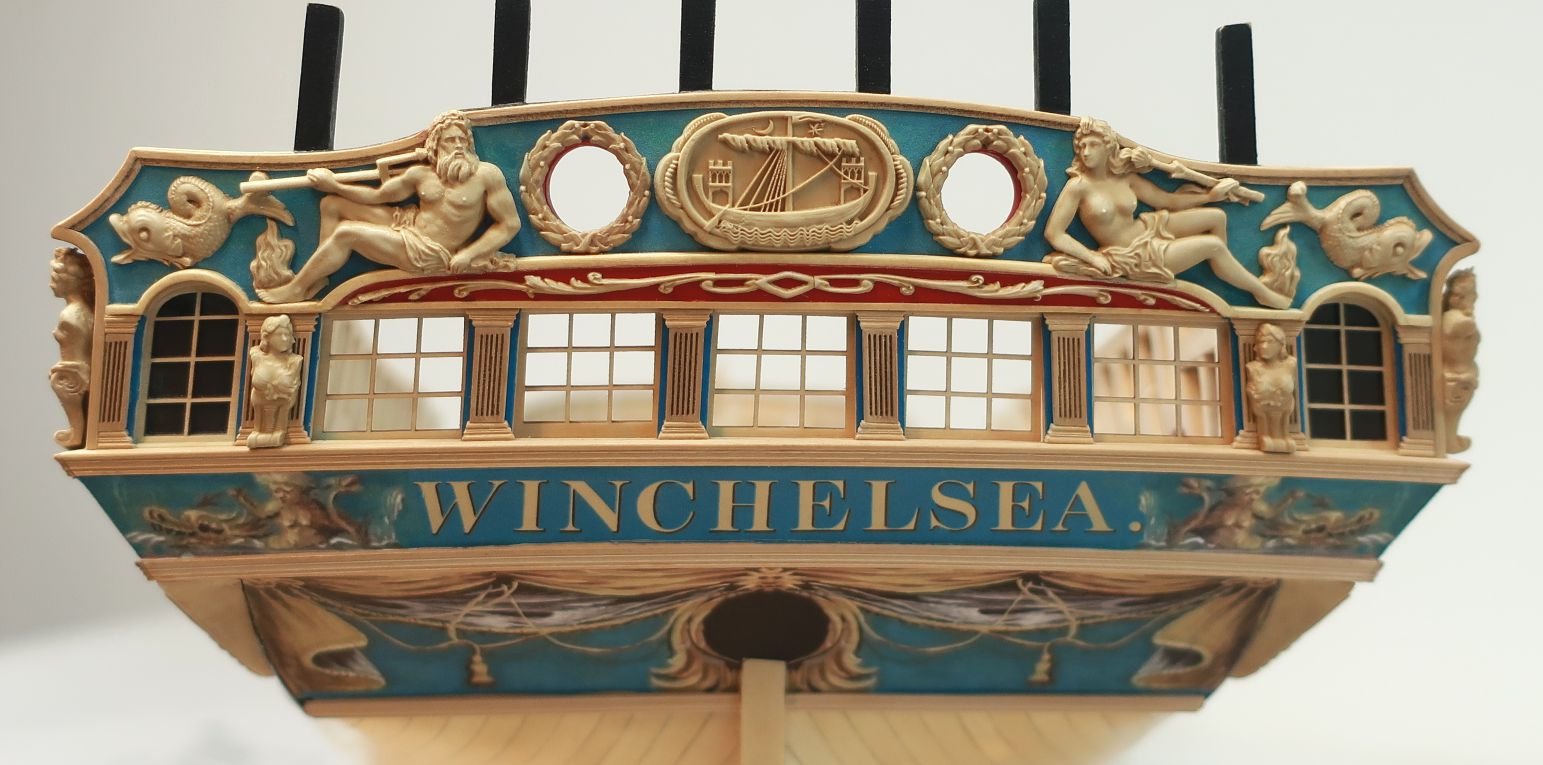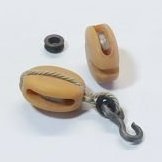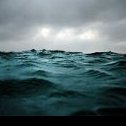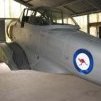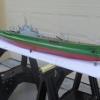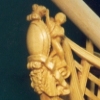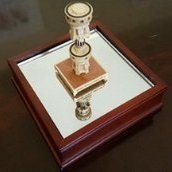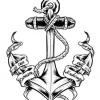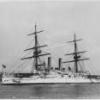Supplies of the Ship Modeler's Handbook are running out. Get your copy NOW before they are gone! Click on photo to order.
×
-
Posts
9,447 -
Joined
-
Last visited
Reputation Activity
-
 Chuck got a reaction from Rach10199 in Simple casting of decorations with a one part mold - demo
Chuck got a reaction from Rach10199 in Simple casting of decorations with a one part mold - demo
I will be doing a demo at my local club as a follow up to the carving exercise we had. I will also create a photo essay of sorts here on MSW.
I have already created the test mold for the live demo and made a few test copies....but will be making more molds of other elements. I will demonstrate one method for making simple one part molds for these flat carvings as it is something that comes in handy for ship modeling. Especially for things like gunport wreaths etc.
So look for the demo to commence in about a week. I am just waiting on newer resin and rubber mold material to arrive in the mail. It has a short shelf life. Using old rubber mold materials is also not good because it could ruin your master.
I will be trying a few brands so I can talk about and review each of them. I hope you will find this a useful addendum to the carving section as it is somewhat related. I hope its OK with you folks that I post here in this area.
Below is the first mold....a master carving....and two cast copies. Casting thin parts is problematic but its what we do as ship modelers so lets give it a go.
Chuck
-
 Chuck got a reaction from aviaamator in Simple casting of decorations with a one part mold - demo
Chuck got a reaction from aviaamator in Simple casting of decorations with a one part mold - demo
I will be doing a demo at my local club as a follow up to the carving exercise we had. I will also create a photo essay of sorts here on MSW.
I have already created the test mold for the live demo and made a few test copies....but will be making more molds of other elements. I will demonstrate one method for making simple one part molds for these flat carvings as it is something that comes in handy for ship modeling. Especially for things like gunport wreaths etc.
So look for the demo to commence in about a week. I am just waiting on newer resin and rubber mold material to arrive in the mail. It has a short shelf life. Using old rubber mold materials is also not good because it could ruin your master.
I will be trying a few brands so I can talk about and review each of them. I hope you will find this a useful addendum to the carving section as it is somewhat related. I hope its OK with you folks that I post here in this area.
Below is the first mold....a master carving....and two cast copies. Casting thin parts is problematic but its what we do as ship modelers so lets give it a go.
Chuck
-
 Chuck got a reaction from Richard Griffith in Simple casting of decorations with a one part mold - demo
Chuck got a reaction from Richard Griffith in Simple casting of decorations with a one part mold - demo
I will be doing a demo at my local club as a follow up to the carving exercise we had. I will also create a photo essay of sorts here on MSW.
I have already created the test mold for the live demo and made a few test copies....but will be making more molds of other elements. I will demonstrate one method for making simple one part molds for these flat carvings as it is something that comes in handy for ship modeling. Especially for things like gunport wreaths etc.
So look for the demo to commence in about a week. I am just waiting on newer resin and rubber mold material to arrive in the mail. It has a short shelf life. Using old rubber mold materials is also not good because it could ruin your master.
I will be trying a few brands so I can talk about and review each of them. I hope you will find this a useful addendum to the carving section as it is somewhat related. I hope its OK with you folks that I post here in this area.
Below is the first mold....a master carving....and two cast copies. Casting thin parts is problematic but its what we do as ship modelers so lets give it a go.
Chuck
-
 Chuck got a reaction from Stuntflyer in Simple casting of decorations with a one part mold - demo
Chuck got a reaction from Stuntflyer in Simple casting of decorations with a one part mold - demo
I will be doing a demo at my local club as a follow up to the carving exercise we had. I will also create a photo essay of sorts here on MSW.
I have already created the test mold for the live demo and made a few test copies....but will be making more molds of other elements. I will demonstrate one method for making simple one part molds for these flat carvings as it is something that comes in handy for ship modeling. Especially for things like gunport wreaths etc.
So look for the demo to commence in about a week. I am just waiting on newer resin and rubber mold material to arrive in the mail. It has a short shelf life. Using old rubber mold materials is also not good because it could ruin your master.
I will be trying a few brands so I can talk about and review each of them. I hope you will find this a useful addendum to the carving section as it is somewhat related. I hope its OK with you folks that I post here in this area.
Below is the first mold....a master carving....and two cast copies. Casting thin parts is problematic but its what we do as ship modelers so lets give it a go.
Chuck
-
 Chuck got a reaction from PeteB in Simple casting of decorations with a one part mold - demo
Chuck got a reaction from PeteB in Simple casting of decorations with a one part mold - demo
I will be doing a demo at my local club as a follow up to the carving exercise we had. I will also create a photo essay of sorts here on MSW.
I have already created the test mold for the live demo and made a few test copies....but will be making more molds of other elements. I will demonstrate one method for making simple one part molds for these flat carvings as it is something that comes in handy for ship modeling. Especially for things like gunport wreaths etc.
So look for the demo to commence in about a week. I am just waiting on newer resin and rubber mold material to arrive in the mail. It has a short shelf life. Using old rubber mold materials is also not good because it could ruin your master.
I will be trying a few brands so I can talk about and review each of them. I hope you will find this a useful addendum to the carving section as it is somewhat related. I hope its OK with you folks that I post here in this area.
Below is the first mold....a master carving....and two cast copies. Casting thin parts is problematic but its what we do as ship modelers so lets give it a go.
Chuck
-
 Chuck got a reaction from Jolley Roger in Simple casting of decorations with a one part mold - demo
Chuck got a reaction from Jolley Roger in Simple casting of decorations with a one part mold - demo
I will be doing a demo at my local club as a follow up to the carving exercise we had. I will also create a photo essay of sorts here on MSW.
I have already created the test mold for the live demo and made a few test copies....but will be making more molds of other elements. I will demonstrate one method for making simple one part molds for these flat carvings as it is something that comes in handy for ship modeling. Especially for things like gunport wreaths etc.
So look for the demo to commence in about a week. I am just waiting on newer resin and rubber mold material to arrive in the mail. It has a short shelf life. Using old rubber mold materials is also not good because it could ruin your master.
I will be trying a few brands so I can talk about and review each of them. I hope you will find this a useful addendum to the carving section as it is somewhat related. I hope its OK with you folks that I post here in this area.
Below is the first mold....a master carving....and two cast copies. Casting thin parts is problematic but its what we do as ship modelers so lets give it a go.
Chuck
-
 Chuck got a reaction from thibaultron in Simple casting of decorations with a one part mold - demo
Chuck got a reaction from thibaultron in Simple casting of decorations with a one part mold - demo
I will be doing a demo at my local club as a follow up to the carving exercise we had. I will also create a photo essay of sorts here on MSW.
I have already created the test mold for the live demo and made a few test copies....but will be making more molds of other elements. I will demonstrate one method for making simple one part molds for these flat carvings as it is something that comes in handy for ship modeling. Especially for things like gunport wreaths etc.
So look for the demo to commence in about a week. I am just waiting on newer resin and rubber mold material to arrive in the mail. It has a short shelf life. Using old rubber mold materials is also not good because it could ruin your master.
I will be trying a few brands so I can talk about and review each of them. I hope you will find this a useful addendum to the carving section as it is somewhat related. I hope its OK with you folks that I post here in this area.
Below is the first mold....a master carving....and two cast copies. Casting thin parts is problematic but its what we do as ship modelers so lets give it a go.
Chuck
-
 Chuck got a reaction from Piet in Young America 1853 by EdT - FINISHED - extreme clipper
Chuck got a reaction from Piet in Young America 1853 by EdT - FINISHED - extreme clipper
I dont want to hijack the topic but...
http://www.ebay.com/itm/Mazbot-7-034-Hole-Punch-Pliers-5-SIZE-Jewelry-Metal-Leather-HIGH-GRADE-HPP06-/280775730493
Ebay of course.
-
 Chuck got a reaction from Obormotov in Chuck's planking videos...
Chuck got a reaction from Obormotov in Chuck's planking videos...
No not exactly. The plank is first bent edgewise as shown and then bent the other way as needed. The one plank on the video if I remember correctly was lower on the hull and didnt require any bending the other way. It was so slight that I didnt need to. But in almost all cases the plank is pre shaped so that it immediately sits against the bulkhead edges. Thats why you dont have to clamp them. The CA dries so quick that its an immediate bond. Its only when folks dont pre-shape that some sort of clamp is required.
I glue two bulkheads at a time and work my way across the hull in scale lengths. Yes there is sanding butnot that much. If the planks fit well than not much sanding is required.
Just like this plank below.....the plank is always bent edge-wise first and then the other way so its completely pre-shaped to fit so no extra bending is needed. In this case below I pre-spiled the plank with a laser cutter edge-wise, but if I was using a plain strip like in the video....it would have been bent to look just like this before gluing.
Here is some more detail
Here is a straight plank as if I were going to place it on the hull. It could be at the bow or at the stern. Most beginners would try to force this into place and the top edge of the plank would lift off the hull and not sit flush against the bulkheads. Some fight with it using pins and clamps and it gets messy. Holding it without bending like shown reveals the gap . Note the widest point of that gap.
Mark this location as the center of the gradual curve you will need.
In the next picture, after bending, you can see how nice it fits and how it is flush against the bulkheads. No forcing needed. Its a perfect fit. Note the dot I marked on the plank for the apex of the curve or the widest part of the gap..You could use the compass method or the tape method to find the exact curve, but I prefer to eyeball it like this. Visually its easy to see the curve after a little practice. I always over bend slightly.
Now all I have to do is bevel the edge that meets the plank already on the hull for a tight fit (just knock off the edge as in the video) and darken the seem as I did in the video with pencil and glue it on. You can see that in this rare instance not much bending other than edge-bending was needed because it was low on the hull.
-
 Chuck got a reaction from EdT in Young America 1853 by EdT - FINISHED - extreme clipper
Chuck got a reaction from EdT in Young America 1853 by EdT - FINISHED - extreme clipper
I dont want to hijack the topic but...
http://www.ebay.com/itm/Mazbot-7-034-Hole-Punch-Pliers-5-SIZE-Jewelry-Metal-Leather-HIGH-GRADE-HPP06-/280775730493
Ebay of course.
-
 Chuck reacted to G.L. in HMS Triton cross section - FINISHED - by G.L. Scale 1:24
Chuck reacted to G.L. in HMS Triton cross section - FINISHED - by G.L. Scale 1:24
The result of an afternoon of carving:
-
 Chuck reacted to Moonbug in USF Confederacy by Augie & Moonbug - FINISHED - Model Shipways - 1:64
Chuck reacted to Moonbug in USF Confederacy by Augie & Moonbug - FINISHED - Model Shipways - 1:64
I've been working on a little bit of double duty as I get closer to the finish of the Confederacy. I've started the ships boats, but have also been working on anchors and small details of the ship.
Nothing particularly complicated with the anchors. As with most of the laser cut parts, the anchor stocks are pretty beefy and required a fair amount of sanding. I used pin files to notch them of course, but the wood itself is soft, so I used nothing grittier than 400 grain sandpaper to ease them down bit by bit and bevel them.
Pretty standard stuff with the bolts, just clipped off some nails and blackened them.
Likewise with the bands - once again the instructions call for card stock, which I think is a perfectly viable option and probably even simulates a better thickness to the bands. But I love the look of using metal instead, so I trimmed some more strips and blackened them as well.
After test fitting both the anchors I stained them up - then finished off the rings and served them with thread.
My intent was to just lash the anchors to the model - as Chuck points out in his primer, that was the case with Navy Board style models (even though I've taken some liberties elsewhere. After lashing the starboard anchor, I realized that because I added a couple extra upper deck cannon to the port side - simply lashing the anchor would interfere!
So here's where I went rogue... I decide to keep the starboard lashed, but rig the port side to the cathead. Crazy talk! I pulled a page from Mastini's book since I couldn't really remember the details, carved out and constructed a pulley and rigged her up. This will be the back side of the model, so I didn't go full-on with details - but I think it looks fair and adds a interesting wrinkle.
I also got the chance to mount the waist stanchions and railings.
Finally - an important transition! I made the switch from the Dremel workbench to the stand. She's getting closer...
-
 Chuck got a reaction from Nirvana in USF Confederacy by Augie & Moonbug - FINISHED - Model Shipways - 1:64
Chuck got a reaction from Nirvana in USF Confederacy by Augie & Moonbug - FINISHED - Model Shipways - 1:64
Thats a lot port lids....way more than are needed. Remember that not every port gets a lid. Only 7 per side.
Chuck
-
 Chuck got a reaction from Obormotov in Chuck's planking videos...
Chuck got a reaction from Obormotov in Chuck's planking videos...
I think this article may explain lining off the hull and finding the curved shape better. It is more descriptive. The version on the NRG site is the power-point from this longer article which is the chapter for the Winchelsea book. Seeing as its taking so long to complete that project I will release the longer version on planking below the wales here. Its seems like the right place/time to do it. In this case however I didnt write about pre-bending edgewise.....I was cutting the spiled edge from a sheet. It really doesnt matter how you achieve the edge-wise bend...either pre cutting from a sheet or bending as shown in the video. Its just important that you do.
Then bend it the other way with heat and also give any needed twist to the plank so its completely shaped before gluing it on the hull. That is the secret to a well-planked hull.
winplankingbelowwales.pdf
-
 Chuck got a reaction from Sargon in Chuck's planking videos...
Chuck got a reaction from Sargon in Chuck's planking videos...
No not exactly. The plank is first bent edgewise as shown and then bent the other way as needed. The one plank on the video if I remember correctly was lower on the hull and didnt require any bending the other way. It was so slight that I didnt need to. But in almost all cases the plank is pre shaped so that it immediately sits against the bulkhead edges. Thats why you dont have to clamp them. The CA dries so quick that its an immediate bond. Its only when folks dont pre-shape that some sort of clamp is required.
I glue two bulkheads at a time and work my way across the hull in scale lengths. Yes there is sanding butnot that much. If the planks fit well than not much sanding is required.
Just like this plank below.....the plank is always bent edge-wise first and then the other way so its completely pre-shaped to fit so no extra bending is needed. In this case below I pre-spiled the plank with a laser cutter edge-wise, but if I was using a plain strip like in the video....it would have been bent to look just like this before gluing.
Here is some more detail
Here is a straight plank as if I were going to place it on the hull. It could be at the bow or at the stern. Most beginners would try to force this into place and the top edge of the plank would lift off the hull and not sit flush against the bulkheads. Some fight with it using pins and clamps and it gets messy. Holding it without bending like shown reveals the gap . Note the widest point of that gap.
Mark this location as the center of the gradual curve you will need.
In the next picture, after bending, you can see how nice it fits and how it is flush against the bulkheads. No forcing needed. Its a perfect fit. Note the dot I marked on the plank for the apex of the curve or the widest part of the gap..You could use the compass method or the tape method to find the exact curve, but I prefer to eyeball it like this. Visually its easy to see the curve after a little practice. I always over bend slightly.
Now all I have to do is bevel the edge that meets the plank already on the hull for a tight fit (just knock off the edge as in the video) and darken the seem as I did in the video with pencil and glue it on. You can see that in this rare instance not much bending other than edge-bending was needed because it was low on the hull.
-
 Chuck got a reaction from Obormotov in Chuck's planking videos...
Chuck got a reaction from Obormotov in Chuck's planking videos...
Yes....by lining off the hull. In general you will be able to see if your planks are measured so they taper too much against the stem. If so move the garboard back at the bow to give you more room to make the planks at the bow wider. For me it is just trial and error but after many hulls you get a good idea of where it should be. But there is always re-tweeking and lining off the hull more than once at the bow to get it looking just right before you make any sawdust with your planks.
-
 Chuck got a reaction from Pierretessier in Chuck's planking videos...
Chuck got a reaction from Pierretessier in Chuck's planking videos...
I advocate no water. You really dont need it. For the kinds of bends we are talking about, the heat does the trick. There will be some spring-back......but just overbend to begin with. The key is to line-off the hull first. Its easier when you have a plan.
That is described here.
http://modelshipworldforum.com/resources/Framing_and_Planking/Lining%20Off%20your%20hull%20for%20planking.pdf
And another by David Antscherl here....... where he cuts the planks to shape rather than bend it in that third plane.
http://modelshipworldforum.com/resources/Framing_and_Planking/Planking%20primer.pdf
But lining off the hull is half the battle. Then realizing the planks are bent and not straight to fit the hull properly in that edge-wise plane. Whatever way you eventually get it there. But force bending a straight plank is a really frustrating way to fight through planking. IMHO
-
 Chuck got a reaction from Cannon Fodder in Chuck's planking videos...
Chuck got a reaction from Cannon Fodder in Chuck's planking videos...
I advocate no water. You really dont need it. For the kinds of bends we are talking about, the heat does the trick. There will be some spring-back......but just overbend to begin with. The key is to line-off the hull first. Its easier when you have a plan.
That is described here.
http://modelshipworldforum.com/resources/Framing_and_Planking/Lining%20Off%20your%20hull%20for%20planking.pdf
And another by David Antscherl here....... where he cuts the planks to shape rather than bend it in that third plane.
http://modelshipworldforum.com/resources/Framing_and_Planking/Planking%20primer.pdf
But lining off the hull is half the battle. Then realizing the planks are bent and not straight to fit the hull properly in that edge-wise plane. Whatever way you eventually get it there. But force bending a straight plank is a really frustrating way to fight through planking. IMHO
-
 Chuck got a reaction from Pierretessier in Chuck's planking videos...
Chuck got a reaction from Pierretessier in Chuck's planking videos...
No not exactly. The plank is first bent edgewise as shown and then bent the other way as needed. The one plank on the video if I remember correctly was lower on the hull and didnt require any bending the other way. It was so slight that I didnt need to. But in almost all cases the plank is pre shaped so that it immediately sits against the bulkhead edges. Thats why you dont have to clamp them. The CA dries so quick that its an immediate bond. Its only when folks dont pre-shape that some sort of clamp is required.
I glue two bulkheads at a time and work my way across the hull in scale lengths. Yes there is sanding butnot that much. If the planks fit well than not much sanding is required.
Just like this plank below.....the plank is always bent edge-wise first and then the other way so its completely pre-shaped to fit so no extra bending is needed. In this case below I pre-spiled the plank with a laser cutter edge-wise, but if I was using a plain strip like in the video....it would have been bent to look just like this before gluing.
Here is some more detail
Here is a straight plank as if I were going to place it on the hull. It could be at the bow or at the stern. Most beginners would try to force this into place and the top edge of the plank would lift off the hull and not sit flush against the bulkheads. Some fight with it using pins and clamps and it gets messy. Holding it without bending like shown reveals the gap . Note the widest point of that gap.
Mark this location as the center of the gradual curve you will need.
In the next picture, after bending, you can see how nice it fits and how it is flush against the bulkheads. No forcing needed. Its a perfect fit. Note the dot I marked on the plank for the apex of the curve or the widest part of the gap..You could use the compass method or the tape method to find the exact curve, but I prefer to eyeball it like this. Visually its easy to see the curve after a little practice. I always over bend slightly.
Now all I have to do is bevel the edge that meets the plank already on the hull for a tight fit (just knock off the edge as in the video) and darken the seem as I did in the video with pencil and glue it on. You can see that in this rare instance not much bending other than edge-bending was needed because it was low on the hull.
-
 Chuck got a reaction from Nirvana in Please Welcome "Wood Project Source" as a new sponsor of MSW
Chuck got a reaction from Nirvana in Please Welcome "Wood Project Source" as a new sponsor of MSW
Cherry and Maple sheets and milled strips are now available.
I know this because I am building his site for him.....I bartered for wood. He isnt the kind of guy to build his own so I am taking care of it for him and you probably notice the similarity to my own. Anyway....as he gives me new updated wood info and availability I will add them to the WPS website and let you guys know.
I hope you give them a try.
Chuck
-
 Chuck got a reaction from coxswain in Please Welcome "Wood Project Source" as a new sponsor of MSW
Chuck got a reaction from coxswain in Please Welcome "Wood Project Source" as a new sponsor of MSW
They are in central New Jersey. They dont have a physical store. He is a member of the a tree commission or conservany or something and gets a lot of his wood from those operations. For example, after Hurricane Sandy he collected a ton of Dogwood, Cherry, and Pear and apple...from fallen trees. Also has dealings with the local tree farmers and orchards.
Chuck
-
 Chuck got a reaction from AnobiumPunctatum in Please Welcome "Wood Project Source" as a new sponsor of MSW
Chuck got a reaction from AnobiumPunctatum in Please Welcome "Wood Project Source" as a new sponsor of MSW
Please welcome and thank Wood Project Source for becoming a sponsor of Model Ship World. WPS supplies milled wood sheets and strips along with carving blocks for many hobbies. Their specialty is Alaskan Yellow Cedar Sheets and Carving Blocks. Other species like Yellow Heart, Purple heart, Butternut, Applewood, Dogwood and Mahogany are soon to follow.
They also carry the staples for our hobby like Boxwood, Swiss Pear and others. They are just finishing up their new website so please have some patience with them as they continue adding more wood species and products to their online store. They have many more than I listed.
I have personally bought from them many times as they are close by and I gotten to know the owner. I have bought some Yellow Cedar and Boxwood from them and will say that I am very happy with the quality of the wood. They have fantastic prices and they are the lowest I have seen for some wood sheets.
Please join me in welcoming them as a sponsor of MSW.
Visit their site and check them out. I am grateful they decided to become a sponsor and didnt hesitate after I asked them about it.
www.woodprojectsource.com
-
 Chuck got a reaction from Nirvana in Please Welcome "Wood Project Source" as a new sponsor of MSW
Chuck got a reaction from Nirvana in Please Welcome "Wood Project Source" as a new sponsor of MSW
I just finished laser cutting the Yellow cedar he dropped off yesterday. The Alaskan Yellow Cedar is such a wonderful wood to laser cut. The parts are for a second barge I am building which will be made entirely out of the yellow cedar. I hope to have pictures real soon but I am really enjoying working with it.
If you are looking for a light golden/yellow wood that is easy to work with I do recommend you give the yellow cedar a try. The top board has some Wipe on Poly on the end. It makes teh color come out nicely. I should have the planking done this weekend so you guys could have a better look at teh stuff as part of a model.
Chuck
-
 Chuck got a reaction from Obormotov in Chuck's planking videos...
Chuck got a reaction from Obormotov in Chuck's planking videos...
The standard practice is to put your wales in first. Measure off the plans. This establishes the correct run of the planks across the hull. I thought that was your hull. That isnt optimal at all.
Then you plank from the wales up......and then from the wales down. Even if its just the first layer of planking for the wales. Best to put the wales in first. Whoever's hull that is will have a funny looking wale at the bow and stern. It doesnt look like the correct run of planking was established.
Measure from the shear down to the top of the wales and the bottom of the wales....marke it off on each bulkhead and plank them first. It will save you a lot of trouble....BUT yes....you can spile all of the planking. Absolutely. But its always always good practice to put the wales in first. If you look around this site you will see plenty of hulls where they didnt do that and then when it came time to add the wales as second layer....they did in fact measure from the shear only to discover that the wales will not follow the run of the first planking layer they did at all. Which looks really odd when done.
Chuck
-
 Chuck got a reaction from Obormotov in Chuck's planking videos...
Chuck got a reaction from Obormotov in Chuck's planking videos...
That is quite the odd shaped hull at the bow. But yes you can spile all of the planking. Usually it is those under the wales that need it most but looking at your bow shape....I am truly at a loss. So yes probably. I cal tell from teh photos that the bulkheads were not faired nearly enough. That probably contributed to the odd shape.
Chuck

